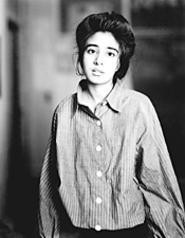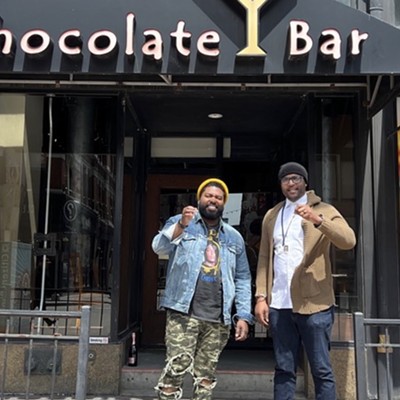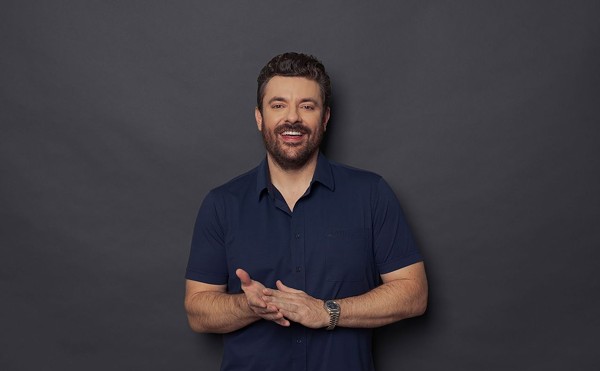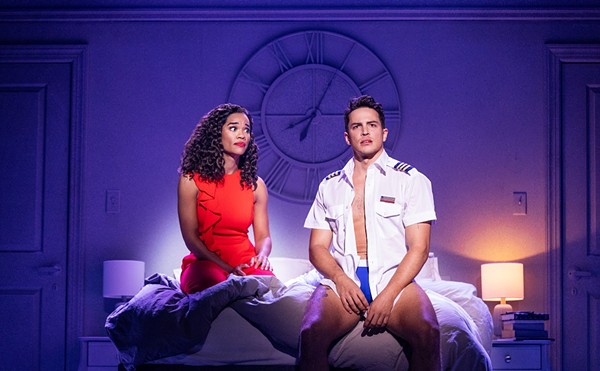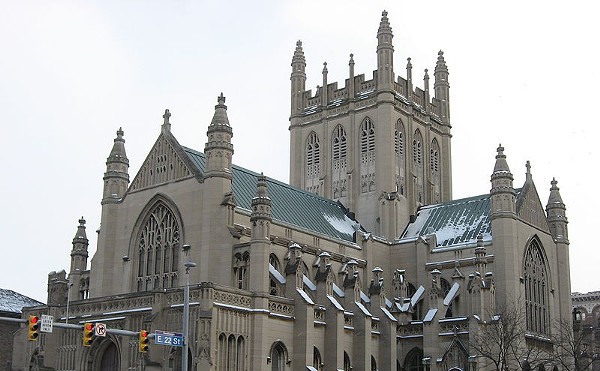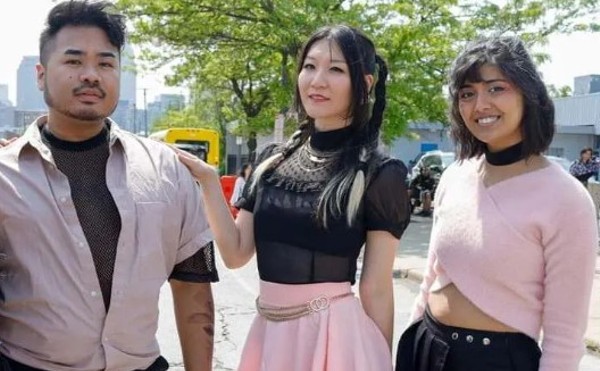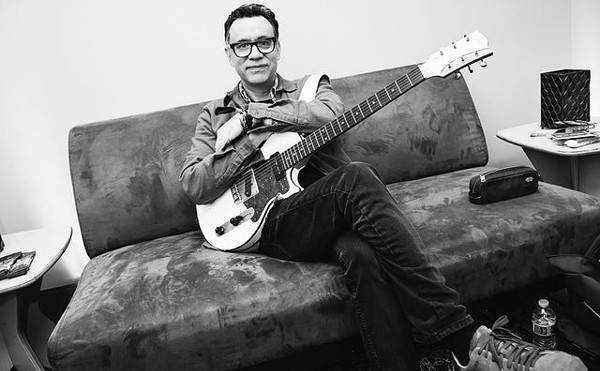Tori Amos is jolie-laide. The French oxymoron, which translates as "pretty-ugly," describes women who aren't supermodel-gorgeous, but have a verve and charm that makes them alluring.
Cleveland is jolie-laide, too. She's a city pockmarked by poverty and a polluted river, but graced with world-famous arts institutions and resilient residents. Twelve of America's most accomplished photographers capture her strange beauty in A City Seen: Photographs From the George Gund Foundation Collection, now on view at the Cleveland Museum of Art. The 148 stunning black-and-white photographs feature the city's people, places, and institutions.
Each artist brought to the project a unique vision, ranging from a documentary approach to a fine-art style, that allows us to see familiar places in new ways and unfamiliar places for the first time. Great photographers are, after all, professional voyeurs, and their cameras are passports to places off-limits to the rest of us.
From 1990 to 2001, the Cleveland-based George Gund Foundation commissioned one photographer each year to produce a portfolio on a topic related to that year's philanthropic priority. Photographs were selected from the portfolio to illustrate the foundation's annual report. David Bergholz, the foundation's executive director, wanted more than just pictures of elated grantees receiving billboard-sized checks. He wanted to be surprised -- and dazzled.
His wish was granted. Exquisitely mounted in spare wood frames, the photographs are chronologically arranged; each grouping (by year, artist, and topic) is identified by a pedestal mount that contains an opened copy of the annual report. The works have two broad subjects -- portraiture and landscape -- with the exception of Linda Butler's brilliant interior shots of arts organizations.
Judith Joy Ross, known for her uncanny ability to capture honest portraits of her subjects, focused on the ethnic diversity and youthful energy of Cleveland public school students. Ross's portraits have a vintage feel, partly because she uses a large-format camera, then prints the images on gold-toned paper, which brings out subtle sepia tones. Both subject and technique are perfectly married in "Yusra Kazmi" (1992), a captivating portrait of a teenage girl. Yusra's shiny black hair poufs around her face, reminiscent of women in 19th-century portraits. She wears no makeup and an unflattering man's shirt, but it doesn't matter: Her quiet, natural beauty requires no ornamentation.
Like Ross, Chicago-based Dawoud Bey is interested in capturing the dignity of young people. For the past two decades, Bey has produced flattering large-scale portraits of teenagers, most of them African Americans; the photos, he says, are an attempt to refute negative stereotypes. For the Gund portfolio, he trained his camera on Cleveland kids and their families, and used his innovative technique of combining multiple images to reveal the subjects' varying moods and interactions during a picture-making session. His portrait "Cordele, Kendra, Gussie, Dan, and Mark Humphrey" (1993), composed of six images, reveals the family's emotional bond through clasped hands, embraces, and smiles.
The most poignant -- and at times uncomfortable -- images are Nicholas Nixon's portraits of patients at the Free Medical Clinic of Greater Cleveland. In them, people are at their most vulnerable: sick, uninsured, and broke. A woman covers her face with her hand. An older man in a shirt and tie, sitting up straight, struggles to preserve his dignity as he sadly stares at the camera.
Other photographers captured the landscape: urban neighborhoods and gardens, Lake Erie, the Metroparks, and yes, the Cuyahoga. To create stunning images of the crooked river, New York-based landscape photographer Lois Conner uses 19th-century equipment and techniques -- a 40-pound banquet camera and a time-consuming platinum printing process that produces a range of rich silvery tones and crisp light. The camera, which takes elongated rectangular shots, emphasizes a long horizon line and is perfectly suited for images of our infamous river. A bird's-eye view, "From Chippewa Road Bridge" (1991), shows the Cuyahoga on a crisp fall or winter day, meandering alongside a road through a barren landscape. The river never looked so good.
Michael Book, however, doesn't put his pictures through the aesthetic spin cycle. His photographs of neighborhoods are desolate, uninhabited urban landscapes infested with concrete and weeds, and they force the viewer to think about the area's past and present. Multiple juxtapositions occur in "Hough; East 79th and LaGrange," where a once-luxurious mansion is now a crumbling, multifamily unit with iron bars on the windows. But the picture's focal point is a vase of flowers in one of the windows -- a sign of hope and beauty amid urban blight. It's the story of Cleveland.
This is one of the most viewer-friendly exhibits you'll find in an art museum; it's a rare opportunity to see your city through living artists' highly trained eyes.

